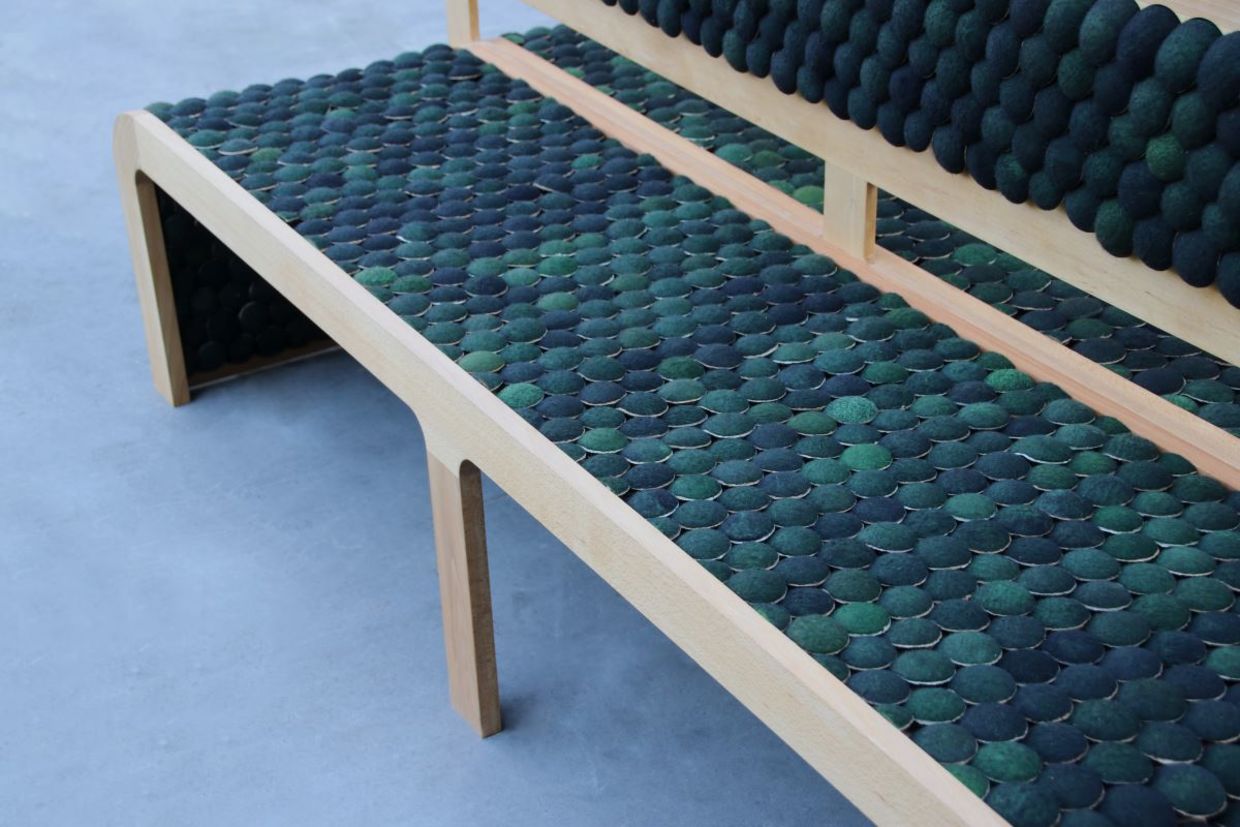
(Courtesy Mathilde Wittock)
Tennis is a very popular sport around the world and its impact on new trends is growing. From tennis clothing becoming everyday wear to the recently released tennis movie Challengers about a tennis prodigy turned coach, tennis can be found almost anywhere, including in your living room.
That’s because Belgium eco-designer Mathilde Wittock is creating furniture from discarded tennis balls, reported CNN. She chose to repurpose tennis balls because of the super short life-span of the balls.
“It takes around 24 different manufacturing steps to [produce] a tennis ball, which is around five days. Then it has such a short lifespan,” Wittock told CNN. “I was looking into tennis balls because I played tennis myself, so I know there is a lot of waste.”
Now she upcycles them to keep the 300 million tennis balls that are produced every year out of landfills. In fact, the US open uses 70,000 a year, Wimbledon 55,000, and the lifecycle of a ball stands at only nine games.
Even if they are contained in their box, if the box has been opened the gas inside the tennis balls will be released over time,” Wittock said. “[Eventually] they will get flat and you’ll have to throw them away.”
Introducing Mathilde Wittock’s eco-designs
This emerging designer graduated in 2021 from Central Saint Martins – University of the Arts in London, England, with a BA in product design and a MA in biodesign, according to icon. Her degree project called Soundbounce, was a result of her sensitivity to noise. The result was an acoustic material made from recycled tennis balls.
Using tennis balls as a building medium is not an easy task. Wittock has to individually cut them by hand along the white line while also removing the brand logo on the balls. She then creates frames with integrated holes where the deconstructed tennis balls can fit. The balls create a padded surface that is excellent for sound reduction.
View this post on Instagram
“Being hypersensitive to noise, the tennis ball presented an opportunity to address this issue,” she told icon. “And, with noise pollution an ever-increasing problem, its effects are still largely unknown, but it is evident it negatively impacts physical and mental health so creating solutions for this is key.”
Wittock’s eco-design work revolves around seeing materials in a new light so it wasn’t much of a stretch to utilize tennis balls in other ways, like making furniture.
Tennis ball furniture
It takes Wittock three to four weeks to complete a chaise that she sells for $2,900, reported CNN. Besides cutting, each ball has to be dyed by hand with colors that are picked to match the client’s space.
It took her a long time to figure out the process, she told CNN: “I needed to find an assembly that changed the iconic appearance of the tennis ball. It’s yellow and has these white lines. How do I distort that relationship?”
View this post on Instagram
The tennis balls Wittock uses are all donated from tennis clubs. While this started off slow, she now works with the Federation of Wallonia in Brussels, who have offered her their entire stock of 100,000 balls. This will last for a while as Wittock can only use around 1,800 a week.
But the life of tennis balls does not end as furniture. When the fuzz starts disintegrating or the rubber shreds, the furniture pieces can be disassembled and recycled into other useful objects like playground mats to protect children from injuries. Being able to keep reusing materials is the key to eco-design.
YOU MIGHT ALSO LIKE:
Turning Chopsticks Into Furniture
The Popularity of Bradley Hart’s Bubble Wrap Art
Acclaimed Artist Recreates ‘Water Lilies’ From Iconic Bricks







